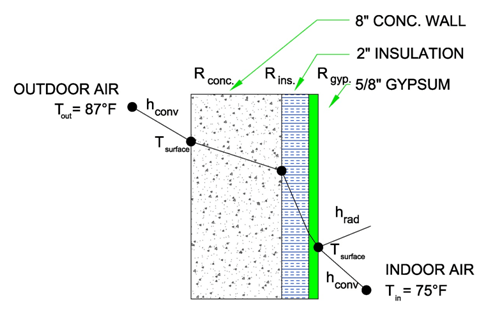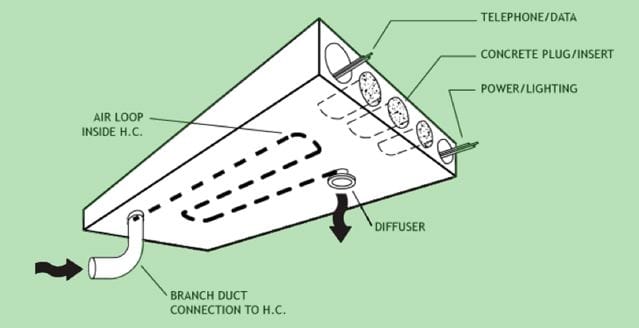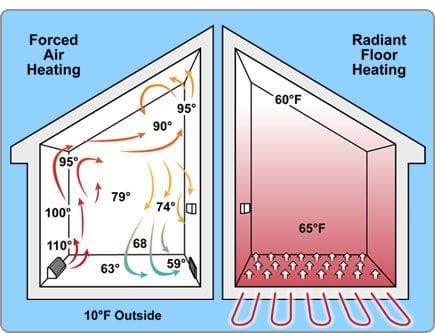Use Your Concrete Structure as a Heating Source
- Details
Thermally store Energy in Concrete
The term thermal mass describes the absorption and storage of heat in a building. Concrete and masonry warm and cool slowly and stay warm (or cool) longer than many other building materials. This thermal mass effectively delays and reduces heat transfer through a concrete or masonry wall, resulting in a reduction in total heat loss or gain through the building envelope. 
The reduced heat transfer through concrete or masonry is not a heat loss but rather indicates that some of the heat is stored in the concrete and later released back into the room.
Your concrete structure can used like a battery and store heat to be used at a later time. Heating and cooling operating costs can be reduced as you only need to “trickle charge” your “battery”. Capital costs can also be reduced as the equipment needed to “trickle charge” your system will also be reduced.
Outdoor daily temperature cycles have a lesser effect on the temperature inside a thermally massive building because the mass reduces heat transfer and moderates the indoor temperature.
Concrete and masonry walls often perform better than indicated by R-values because R-values are determined under steady-state temperature conditions. Thus, a thermally massive building will generally use less energy than a frame building insulated by materials of the same R-value.
What does this mean?
Building envelop technologies are getting better and better. Triple pane glass, high insulation values, vapour barrier, rain screens, thermal bridging are all contributing to smaller and smaller heat losses in today’s buildings.
Heat generated from lights, people, computers, cooking, showering, etc. are all reducing the amount of heat required in current buildings. So much so, that cooling is more of an issue than heating when it comes to thermal comfort.
Most everyone is familiar with in-floor hot water radiant heat. What if we replace the hot water with hot air? We get a radiant concrete panel with no chance of water leaks. We can also run cold air through the concrete and it can act like a heat sink to provide cooling to the space.
I am over simplifying this, but it can be done.
There is a system that uses this principle with hollow core concrete structures. Termobuild is a system out of Ontario using this concept. The system is software controlled to ensure that the space temperatures are maintained.
Indoor Air Quality is improved as the supply air is from a dedicated outdoor air system (DOAS). As well, the space is provided with radiant heating or cooling. Some of the advantages of radiant energy are:
- · Thermal Comfort - Buildings equipped with radiant systems have interior environments that are highly favorable to human thermal comfort.
- · A system that’s out of sight
- · A quiet system
- · A clean system - radiant systems create very gentle (imperceptible) room air circulation.

So using your concrete structure as your mechanical system maybe beneficial for all – as well as save you money.
For more information on this topic, please contact our office: